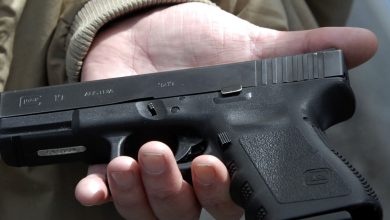Education
Apply These Secret Techniques To Improve Anatomy Drawing

A little about anatomy drawing Shoulders
Below you can see how the muscle lines connect to the torso at different arm positions. Again, they are the same for women, if the line of the rib cage simply flows into the outline of the chest.
- The armpit line always fits under the ribcage line, but protrudes in front of the backline, if visible.
- The line of the trapezius muscle runs behind the line drawing of the neck and deltoid muscle.
- When the arm is extended, the biceps line is completely in front, rising above the deltoid muscle and forearm. See how it flows into the chest line, even if their connection is not visible (it can be easily seen on a muscular or sinewy body).
- When the arm is raised, the trapezius muscle line is still in the back and may disappear altogether if the deltoid is too large. However, see how the muscles protrude in this position, even if they are not large, they remain mass, and move in motion rather than disappear.
- In this position, the line of the chest muscle begins to disappear (chiaroscuro may hint at it, and not just a sharp outline). Even women’s breasts (depending on size) lose most of their volume when the arm is raised.
- In the same position of the hand, the muscles located inside are highlighted with dotted lines. Do not confuse the outside line with the inside shoulder line (1), which can never go into the front of the arm; here is the muscle that protrudes slightly when the arm is raised.
Elbow
The elbow joint is similar to a hinge – it is pointed when the arm is bent, and hollow when it is extended. You can see these arts in the example below:
- The ends of the two bones (or condyles) are visible when the arm is bent at the elbow, so the tip of the elbow is always double and looks different from different angles of view. From this point of view, the protruding point is lower. Still, there is also a bulge (1), which is usually illuminated.
- If the arm is bent at the elbow, the previously seen protruding point appears more clearly and almost sticks out. Because the bulge on the other arm is now at the bottom and forms an obtuse angle. When comparing two positions, remember bulge of the elbow is always on the line of the underside of the forearm.
- If you look down at your bent elbow, you will see not a sharp tip, but a wedge-shaped tip.
- When the arm is extended, the bulge of the elbow disappears, but instead, the bony structure creates a depression. It may differ depending on the position of the hand, as shown in the illustration …
- The contour of the hand can “flow” into the depression in this example. With the help of a mirror, it will be useful for you to observe your hand in these positions.
A little about the movements
Walking positions
According to Below are the four main foot positions when walking. Of course, in a full cycle of walking, which is mainly of interest to animators, you can see twice as many positions, but four will be enough for us.
- The most expressive step is 1, but if your 3d drawing several people walking, you should not depict them in one position, the other three will come in handy here.
- When walking, the lower back remains straight. Leaning it forward implies a quick step, but remember: if the walking person leaned strongly, he would have toppled over!
- Also, note that one foot should always rest on the ground when walking, and there is a short moment (in step 1 this is called “contact”) when both feet touch the ground.
- The hand is retracted back in position 1, and forward in example 4. The above shows the average value of the swing of the hand when walking, but it can be different and caricatured grotesque as well.
- The wave of the hand is directed in the opposite direction from the leg: the right hand is in front when the right leg is behind, and vice versa.



